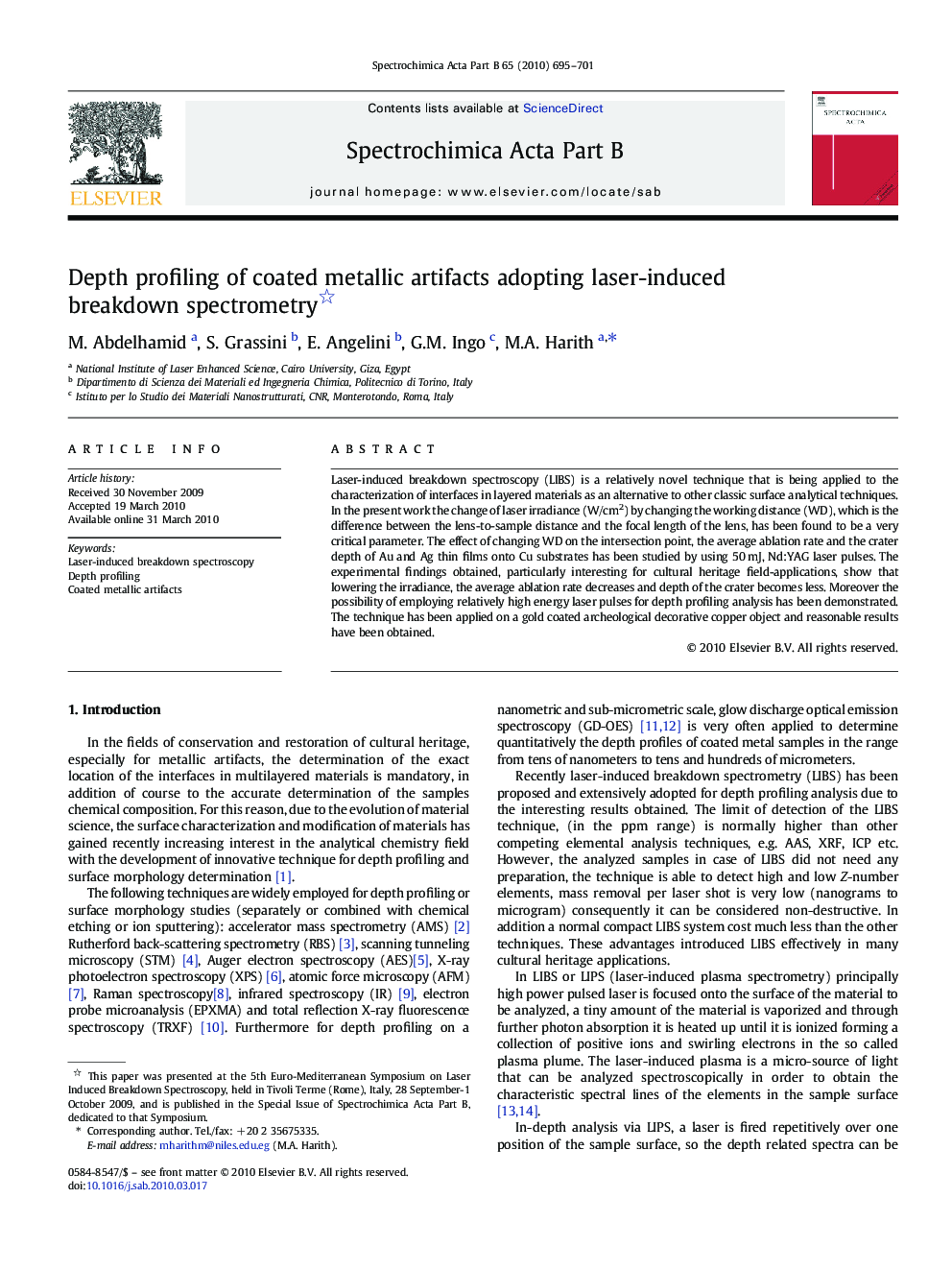| Article ID | Journal | Published Year | Pages | File Type |
|---|---|---|---|---|
| 1240312 | Spectrochimica Acta Part B: Atomic Spectroscopy | 2010 | 7 Pages |
Laser-induced breakdown spectroscopy (LIBS) is a relatively novel technique that is being applied to the characterization of interfaces in layered materials as an alternative to other classic surface analytical techniques.In the present work the change of laser irradiance (W/cm2) by changing the working distance (WD), which is the difference between the lens-to-sample distance and the focal length of the lens, has been found to be a very critical parameter. The effect of changing WD on the intersection point, the average ablation rate and the crater depth of Au and Ag thin films onto Cu substrates has been studied by using 50 mJ, Nd:YAG laser pulses. The experimental findings obtained, particularly interesting for cultural heritage field-applications, show that lowering the irradiance, the average ablation rate decreases and depth of the crater becomes less. Moreover the possibility of employing relatively high energy laser pulses for depth profiling analysis has been demonstrated. The technique has been applied on a gold coated archeological decorative copper object and reasonable results have been obtained.
